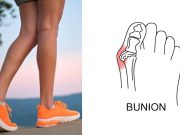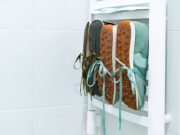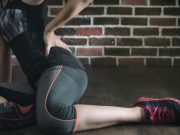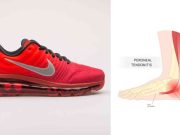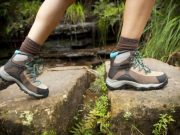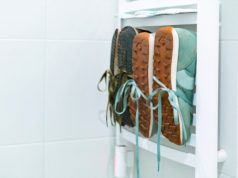Running shoes should offer a snug fit, not tight, allowing your foot to move naturally without constriction. They should have enough room in the toe box to wiggle your toes and typically about a thumb’s width of space from the longest toe to the end of the shoe.
As a new runner, you might have many questions about footwear. One of the most common questions is whether running shoes should be tight. Some runners believe tight shoes are necessary for a better fit and support, while others argue they feel more comfortable in loose-fitting shoes. But is there a correct answer to this debate? In this article, we explore Are Running Shoes Supposed To Be Tight?
Table of Contents
Importance of Proper Running Shoe Fit:
Are you curious about how your running shoes should fit? Proper fit is essential for keeping your feet happy and healthy during running. Here’s why:
Firstly, your toes should have a thumb’s width of space between them and the end of the shoe. This allows your foot to expand and flex during your run. Your midfoot and heel should also fit snugly but not feel tight or constricted.
Secondly, an ill-fitting shoe can lead to many problems, such as blisters, numbness, and bruising. Tingling or numbness can indicate insufficient volume, blisters on your toes or the ball of your foot mean your shoe is too small or too wide, respectively, while a bruised toe suggests your shoe is too short.
To ensure the perfect fit:
- Visit a store with various shoes and a knowledgeable fitter.
- Get fitted when your feet are swollen at the end of the day, wear the socks you plan to run in and bring your orthotics if you have them.
- Don’t forget to detail any foot issues or concerns you have.
With a little extra effort, you’ll find the perfect shoe for your feet!
Avoid Foot Injuries with a Proper Fit:
Avoid Foot Injuries with a Proper Fit: A Listicle: Properly fitting running shoes is crucial in preventing foot injuries during your runs. Here are some important tips to keep in mind:
1. Check the width and shape of the shoe: Make sure the shoe matches the width and shape of your foot. You can remove the footbed and stand on it to verify the fit.
2. Notice how the shoe feels on your foot: Is it comfortable or too restrictive? Some shoes have a lot of structure for support, which can make them uncomfortable.
3. Look for thick midsoles: This can reduce shock when you impact the ground. Try running to test the cushioning.
4. Check for toe space: You should have one thumb breadth from the top of your toe to the edge of the shoe. Make sure your toes are not bunched up in the shoe.
5. Check for heel fit: Make sure the shoe feels snug around your heel but leaves room for your toes to wiggle. If your heel slips, it could be due to the shoe being too big or not laced properly.
Following these tips ensures that your running shoes fit properly and avoid unnecessary foot injuries.
Components of a Perfect Running Shoe Fitting:
When it comes to running shoes, the fit is everything. A perfect fit can prevent injuries like lost toenails and blisters and ensure optimal performance. Here are three components of a perfect running shoe fitting:
First, comfort is key. Running shoes should always feel comfortable, no matter how stylish.
Second, the toe box should have enough room for your toes to wiggle but not slide around. Leave about a thumbnail’s worth of space between your longest toe and the front of the shoe.
Finally, the rest of the shoe should be snug but not too tight or too loose. Ensure there’s enough volume in the shoe, and when you tie the laces, there should be two fingers worth of space between the eyelets. Remember to prioritize fit, feel, and function when choosing your perfect running shoe. With these components in mind, you’ll find a perfect fit for your running needs.
Comfort Comes First:
Comfort Comes First: How to Ensure a Perfect Fit for Your Running Shoes
Regarding running shoes, comfort should always be your top priority. Here are a few tips that can help you achieve the perfect fit:
1. Get your feet measured professionally. This will help you determine the right size and width for your feet.
2. Make sure your toes have some wiggle room. Your running shoes should have a spacious toe box that allows your toes to move without getting cramped or squished.
3. Check the fit of your heel and midfoot. The heel should be snug, while the midfoot should feel like a light hug. This will help keep your foot secure and prevent it from sliding around.
4. Don’t settle for a shoe that doesn’t feel right. If a pair of running shoes doesn’t feel comfortable from the start, it’s unlikely that they will feel better over time. Don’t hesitate to try on different styles until you find the perfect fit.
Remember, running in poorly fitting shoes can cause many problems, from blisters and calluses to serious injuries like sprains and strains. Invest in a good pair of running shoes that fit properly; your feet will thank you.
Finding the Right Snugness for Running Shoes:
Are you struggling to find a pair of running shoes that fit comfortably? Here are some tips for finding the right snugness:
1. Proper toe fit: Your toes should have a thumb’s width of space between them and the end of the shoe.
2. Midfoot and heel fit: Your midfoot and heel should be snug but not too tight.
3. Look for signs that your shoes don’t fit properly, such as tingling or numbness in your toes.
4. Wear the socks you plan to run in when trying on shoes.
5. Get fit at the end of the day when your feet are at their largest.
Finding the right fit is crucial for a comfortable and injury-free run. Don’t settle for shoes that are too tight or don’t fit properly. With a little effort and patience, you can find the perfect pair of running shoes that feel like they were made just for you.
How Tight Should the Toe Box Be?
When it comes to running shoes, getting the right fit is crucial for a comfortable and safe run. The toe box area, where your toes sit, should have enough room for natural foot splay but not be too loose or tight. An ideal fit is when your longest toe has about a thumb’s width of space from the shoe’s end. So, how tight should the toe box be? First, ensure wiggle room in the toe box area to bend and flex your foot without restriction. Secondly, ensure the shoe isn’t too loose that your foot slops around, affecting your running form.
Finding the perfect fit depends on your foot shape and size, so try on different brands and models to see which works for you. Badly fitting shoes can cause blisters and black toenails and hurt your ankle, affect your stride, and even force you to stop your run early. When buying shoes, remember comfort and proper fit are more important than looks or price.
Common Mistakes When Buying Running Shoes:
When it comes to running, wearing the right shoes is crucial. But, many runners make mistakes when buying their shoes. Here are seven common mistakes you should avoid:
1. Don’t buy running shoes based on looks only. Proper support, fit, and comfort are key.
2. Avoid shoes that are too tight, as they can lead to blisters and sore feet. Leave about half an inch of space in the forefoot area for a comfortable fit.
3. Don’t wear shoes that are worn out. A good pair of running shoes should last 300-500 miles or until aches and pains arise.
4. To ensure a better fit, shop for shoes later in the day when your feet are more swollen.
5. Don’t assume your shoe size. Get your feet measured every time you buy new running shoes.
6. Avoid buying shoes online, as you can’t try them on beforehand.
7. Don’t forget to try running in your shoes before buying them. This will help you determine if the shoes provide the necessary support for your running style.
The Importance of Getting Your Foot Measured:
When buying running shoes, getting your foot properly measured is crucial. Here are the top reasons why:
1. Matching Flexing Points – Your shoe should flex where your foot flexes. This can only be achieved if you measure your arch length by a store associate.
2. Shoe Volume – Measuring the space between the top eyelets with your fingers can help determine if a running shoe is too tight or loose.
3. Common Foot Injuries – Wearing a shoe with the correct volume can save you from common foot injuries like plantar fasciitis.
4. Changes in Foot Size – Your feet don’t get shorter, but the tiny muscles in your feet may stretch, causing them to ‘grow.’ That’s why getting your foot measured every time you buy running shoes is important.
Measuring your foot by a professional can help you find the perfect fit that’s not too tight or loose. It’s also important to remember that shoe sizes vary among brands, so don’t be married to a particular size and always try shoes on before buying.
Overcoming Fear of Increasing Shoe Size:
Are you afraid of increasing your shoe size when buying running shoes? Here are some tips to help you overcome that fear and find the perfect fit for your feet.
First, get your feet properly measured by a store associate. This will help you determine if you need to go up a size or half-size. Remember that your feet may have grown due to muscle stretching, so don’t be afraid to try a bigger size.
Next, measure the space between the top eyelets with your fingers when trying on shoes. The shoe should be snug, not tight or loose, with two fingers between the eyelets. Don’t worry about what others may say about your shoe size; focus on the fit, feel, and function.
Remember, running shoes that fit your feet properly can increase comfort and prevent foot injuries. So don’t let the fear of a bigger size hold you back from finding the perfect fit.
The Three F’s: Fit, Feel, and Function:
When buying running shoes, it’s important to remember the three F’s: fit, feel, and function. These elements will ensure you find the perfect pair that makes your running experience comfortable and injury-free. Start by measuring your foot properly and paying attention to the shoe’s volume, width, and shape. The shoe’s upper material should feel comfortable and not restrictive, and the midsole should have enough cushioning to reduce shock. Leave one thumb breadth of space between the top of the toe and the edge of the shoe to avoid injuries and ensure room for your feet to swell.
When trying on shoes, ensure they feel snug around your heel and leave some wiggle room for your toes. If your heel slips, the shoe is too big or not laced properly. Consider going up half a size or full if your current shoe size is too snug. Always prioritize fit, feel, and function over other aspects like color or style. Remembering these tips, you’ll find the perfect pair of running shoes to enhance your training and running results.





